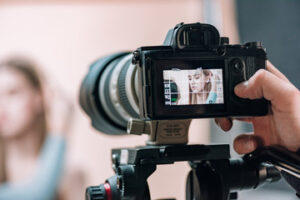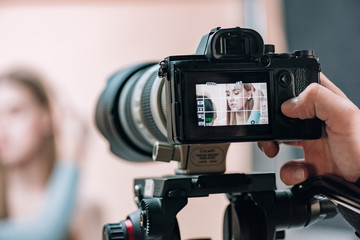Portrait photography involves taking photographs of people with a camera. It can be done with a simple camera or with a borrowed camera. Ideally, you will want to use natural light. The sun will provide you with the most beautiful light, but if it is not available, other lighting alternatives will still produce fantastic results.

The photographer uses the right equipment to capture the subject’s features and personality. The goal is to capture the subject’s character and personality, not to mimic their appearance. Portrait photographers use retouching techniques to enhance the quality of their images. While some purists may consider editing a negative, programs like Photoshop are tools that allow you to make your photographs more beautiful. It’s important to know what your subject wants and be open to criticism.
When shooting portraits, you should make sure your subject feels comfortable and confident. You may also want to use props to add visual interest. Portrait photography also requires adequate lighting and a proper background. To achieve a natural, beautiful result, make sure your lighting is appropriate for the setting and the subject’s clothing. And finally, choose a flattering portrait photography pose. While the background is important, the focus of the photo should be the subject’s eyes.
There are three common portrait photography compositions: the head and shoulder portrait, the three quarter portrait, and the full portrait. Each one has its own benefits and drawbacks. If you’re shooting in a natural, relaxed environment, using a shallow depth of field can help you get the perfect portrait. For the best results, use a center-weighted meter.
Another common type of portrait photography involves a more “constructivist” approach. In this method, the subject is photographed without their knowledge. This approach is also known as “informal portrait photography.” It is less invasive than the formal one, and it allows you to capture the subject’s personality and emotions without having them pose for the photographer. You can even incorporate a photograph of a friend or loved one in their daily activities.
Portrait photography poses a variety of challenges, including the need to interpret the body language of the subject. Some people open up to the camera, while others will become uncomfortable. Photographers must communicate with their subjects well before the shoot and during the shoot. Additionally, shooting outdoors in natural light presents many challenges, including changing light and weather conditions.
The best way to improve your skills at portrait photography is to practice. You can find online resources and mentors that will help you learn the ins and outs of the craft. It’s also possible to purchase courses for free or low-cost that will teach you the basics of portrait photography. The information available is not complicated, but it is important to practice and refine your techniques to become a better photographer. In the end, practice makes perfect.
Being photographed is stressful for the subject, so it’s vital to create a photo shoot where your subject is comfortable. The setting in your photo can enhance your subject’s personality and add to the viewer’s experience. It should be calming, but also add visual interest. Keep in mind that even the best photography equipment is useless without a relaxed subject.
Photography, as a hobby and profession, has a long history. Photography has been used since ancient times to document events and provide information for understanding. Ancient civilizations used photography to record events, while other civilizations, used photography to portray images of spiritual and cultural importance. In modern times, photography has grown to become an important part of everyday life, and photography contributes to many people’s lives. Some of the most popular hobbies and professions involve photography.

